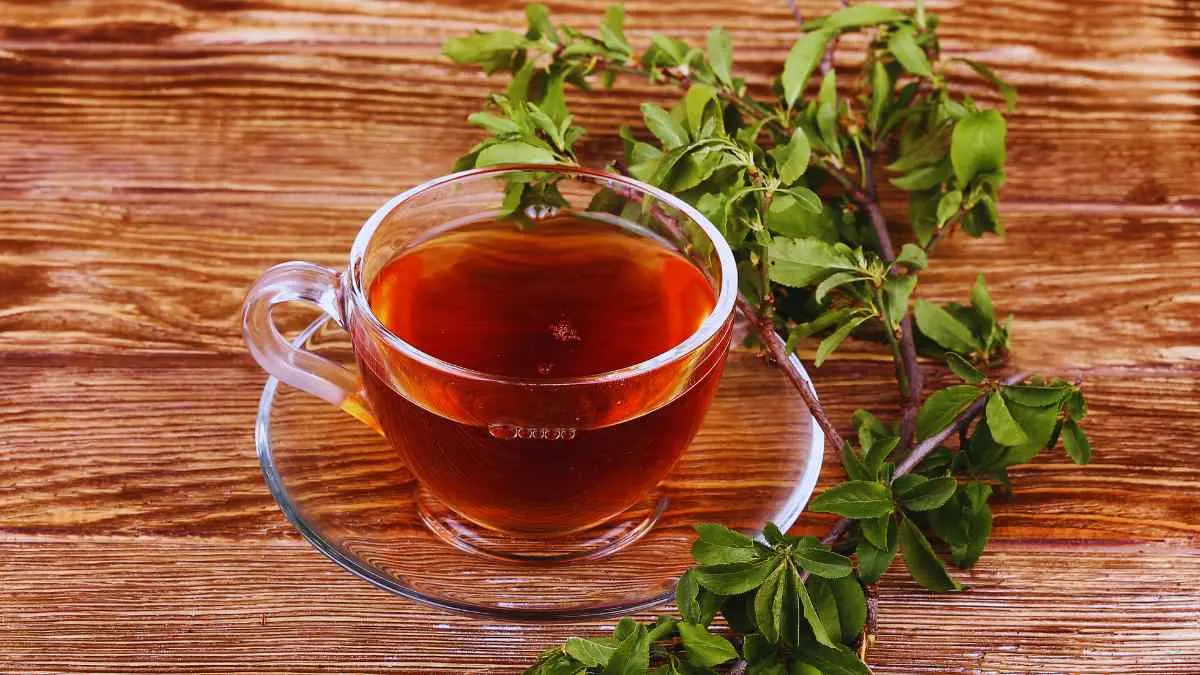Spearmint tea, derived from the leaves of the Mentha spicata plant, is a refreshing herbal beverage celebrated for its distinctive flavor and numerous health benefits. Unlike its cousin peppermint, spearmint offers a milder, sweeter taste, making it a popular choice for tea enthusiasts worldwide.
This article delves into the origins of spearmint, provides a step-by-step guide on brewing the perfect cup, explores its health benefits, and addresses common questions.
Origins and History of Spearmint:

Spearmint (Mentha spicata) is a perennial herb native to Europe and southwestern Asia. Its name “spearmint” is derived from the plant’s spear-shaped leaves. Historically, spearmint has been utilized for its aromatic properties and medicinal benefits.
Ancient civilizations, including the Egyptians and Romans, incorporated spearmint into their daily lives, using it in culinary dishes and medicinal concoctions. In modern times, spearmint is cultivated globally and is a staple in various herbal teas.
How to Brew Spearmint Tea: A Step-by-Step Guide:
Brewing spearmint tea is a straightforward process that brings out the herb’s natural flavors. Here’s how to prepare a perfect cup:
Ingredients:
-
1–2 teaspoons of dried spearmint leaves (or 5–10 fresh leaves)
-
1 cup of water
-
Optional: honey, lemon, or a cinnamon stick for added flavor
Instructions:
-
Boil Water: Bring 1 cup of water to a boil.
-
Prepare Leaves: If using fresh spearmint, gently crush the leaves to release their oils.
-
Steep: Place the spearmint leaves in a teapot or cup. Pour the boiling water over the leaves. Cover and let it steep for 5–7 minutes.
-
Strain and Serve: Strain the tea to remove the leaves. Add honey, lemon, or a cinnamon stick if desired. Serve hot or chilled.
For an iced version, brew the tea as above, let it cool, and refrigerate. Serve over ice with a sprig of fresh spearmint.
Recommended: White Tea | Flavor, and How to Brew
Health Benefits of Spearmint Tea:
Spearmint tea is more than just a flavorful beverage; it offers several health benefits:
1. Digestive Aid
Spearmint has been traditionally used to alleviate digestive issues such as indigestion, bloating, and nausea. The menthol in spearmint can relax the muscles of the gastrointestinal tract, promoting smoother digestion. Vinmec International Hospital
2. Hormonal Balance
Studies have shown that spearmint tea can reduce elevated testosterone levels in women with polycystic ovary syndrome (PCOS). This anti-androgenic effect may help manage symptoms like hirsutism (excessive hair growth). PubMed
3. Anti-Inflammatory Properties
Spearmint contains rosmarinic acid, a compound known for its anti-inflammatory effects. Regular consumption of spearmint tea may help reduce inflammation and alleviate symptoms of conditions like osteoarthritis. Cleveland Clinic
4. Cognitive Function
Emerging research suggests that spearmint may enhance cognitive function. A study found that older adults who consumed spearmint extract daily experienced improvements in working memory. Medical News Today
5. Antioxidant Properties
Spearmint is rich in antioxidants, which help combat oxidative stress in the body. These antioxidants may play a role in preventing chronic diseases and promoting overall health. Frontiers
Potential Side Effects and Considerations:
While spearmint tea is generally safe for most individuals, there are some considerations:
-
Acid Reflux: Spearmint can relax the lower esophageal sphincter, potentially exacerbating symptoms of acid reflux or GERD. Real Simple
-
Pregnancy and Breastfeeding: Consult with a healthcare provider before consuming spearmint tea during pregnancy or breastfeeding, as high doses may not be safe. Health
-
Allergies: Individuals allergic to mint should avoid spearmint tea.
-
Medication Interactions: Spearmint may interact with certain medications, including those for hormone regulation and liver function. Always consult a healthcare provider if you’re on medication. Real Simple
Common Questions:
Q1: Can I drink spearmint tea daily?
Yes, consuming one to two cups of spearmint tea daily is generally safe for most adults. However, it’s essential to monitor for any adverse reactions. Real Simple
Q2: How does spearmint tea compare to peppermint tea?
Spearmint tea has a milder, sweeter flavor compared to peppermint tea. Both offer health benefits, but spearmint is often preferred for its gentler taste.
Q3: Can I use spearmint essential oil to make tea?
It’s not recommended to use essential oils for tea preparation due to their potency. Always use culinary-grade herbs for brewing.
Q4: How should I store spearmint tea?
Store dried spearmint leaves in an airtight container, away from light and moisture, to preserve their flavor and potency.
Note: Spearmint tea is a delightful herbal beverage that not only pleases the palate but also offers a range of health benefits. Whether you’re seeking digestive support, hormonal balance, or a refreshing drink, spearmint tea is a versatile and natural choice. Always consider any personal health conditions or medications and consult with a healthcare provider if necessary.

